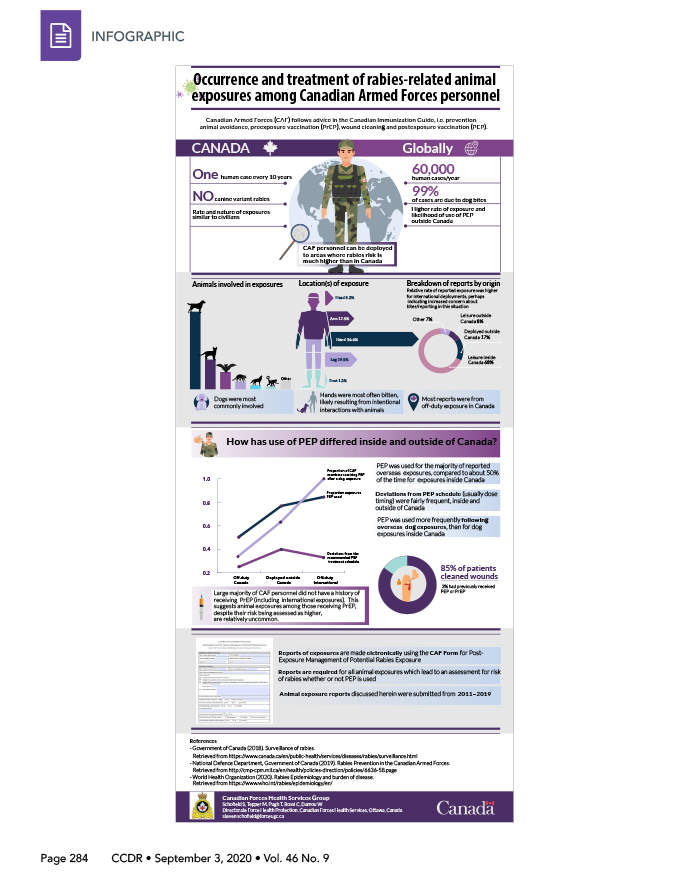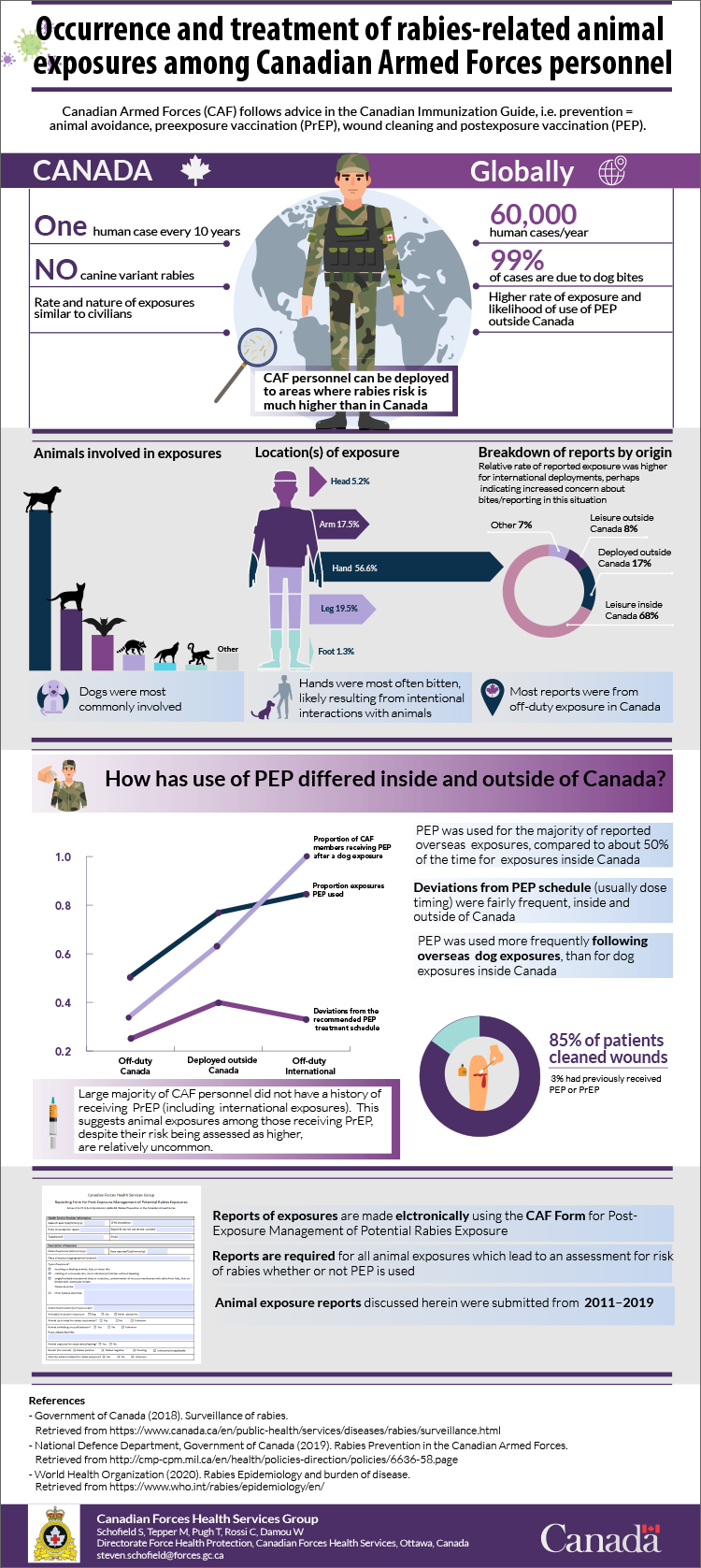Canadian Armed Forces (CAF) exposure to rabies and preventative measures taken

 Download this article as a PDF
Download this article as a PDF
Published by: The Public Health Agency of Canada
Issue: Volume 46–9: Force Health Protection
Date published: September 3, 2020
ISSN: 1481-8531
Submit a manuscript
About CCDR
Browse
Volume 46–9, September 3, 2020: Force Health Protection
Infographic
Occurrence and treatment of rabies-related animal exposures among Canadian Armed Forces personnel

Text description: Infographic
Occurrence and treatment of rabies-related animal exposures among Canadian Armed Forces personnel
Canadian Armed Forces (CAF) follows advice in the Canadian Immunization Guide, i.e. prevention = animal avoidance, preexposure vaccination (PrEP), wound cleaning and postexposure vaccination (PEP).
In Canada, there are approximately only one human case of rabies every 10 years from animal exposure. The canine variant of rabies has been eliminated through animal vaccination programs. Rate and nature of exposures are similar to civilians.
Globally, there are about 60,000 human cases of rabies per year, primarily in developing countries. 99% of which are from dog bites. Higher rate of exposure and likelihood of use of PEP for international exposures.
CAF personnel can be deployed to areas where rabies risk is much higher than in Canada.
Animals involved in exposures
Dogs were the most common animal involved in exposures among cats, bats, raccoons, wolves, monkeys and other animals.
Location(s) of exposure
Hands were most often bitten, likely resulting from intentional interactions with animals.
- Head 5.2%
- Arm 17.5%
- Hand 56.6%
- Leg 19.5%
- Foot 1.3%
Breakdown of reports by origin
Relative rate of reported exposure was higher for international deployments, perhaps indicating increased concern about bites/reporting in this situation. Most reports were from off-duty exposure in Canada.
- Leisure in Canada 68%
- Deployed outside Canada 17%
- Leisure outside Canada 8%
- Other 7%
How has use of PEP differed inside and outside of Canada?
PEP was used for the majority of reported overseas exposures, compared to about 50% of the time for exposures inside Canada.
Deviations from PEP schedule (usually dose timing) were fairly frequent, inside and outside of Canada.
PEP was used more frequently following overseas dog exposures, than for dog exposures inside Canada.
The large majority of CAF personnel did not have a history of receiving PrEP (including international exposures). This suggests animal exposures among those receiving PrEP, despite their risk being assessed as higher, are relatively uncommon.
Eighty five percent of patients cleaned wounds and 3% had previously received PEP or PrEP.
Reports of exposures are recorded electronically using the CAF Form for Post-Exposure Management of Potential Rabies Exposure.
Reports are required for all animal exposures which lead to an assessment for risk of rabies whether or not PEP is used.
Animal exposure reports discussed herein were submitted from 2011–2019.
References
- Government of Canada (2018). Surveillance of rabies.
Retrieved from https://www.canada.ca/en/public-health/services/diseases/rabies/surveillance.html - National Defence Department, Government of Canada (2019). Rabies Prevention in the Canadian Armed Forces.
Retrieved from http://cmp-cpm.mil.ca/en/health/policies-direction/policies/6636-58.page - World Health Organization (2020). Rabies Epidemiology and burden of disease.
Retrieved from https://www.who.int/rabies/epidemiology/en/
Canadian Forces Health Services Group
Schofield S, Tepper M, Pugh T, Rossi C, Damou W.
Directorate Force Health Protection, Canadian Forces Health Services, Ottawa, Canada
steven.schofield@forces.gc.ca
